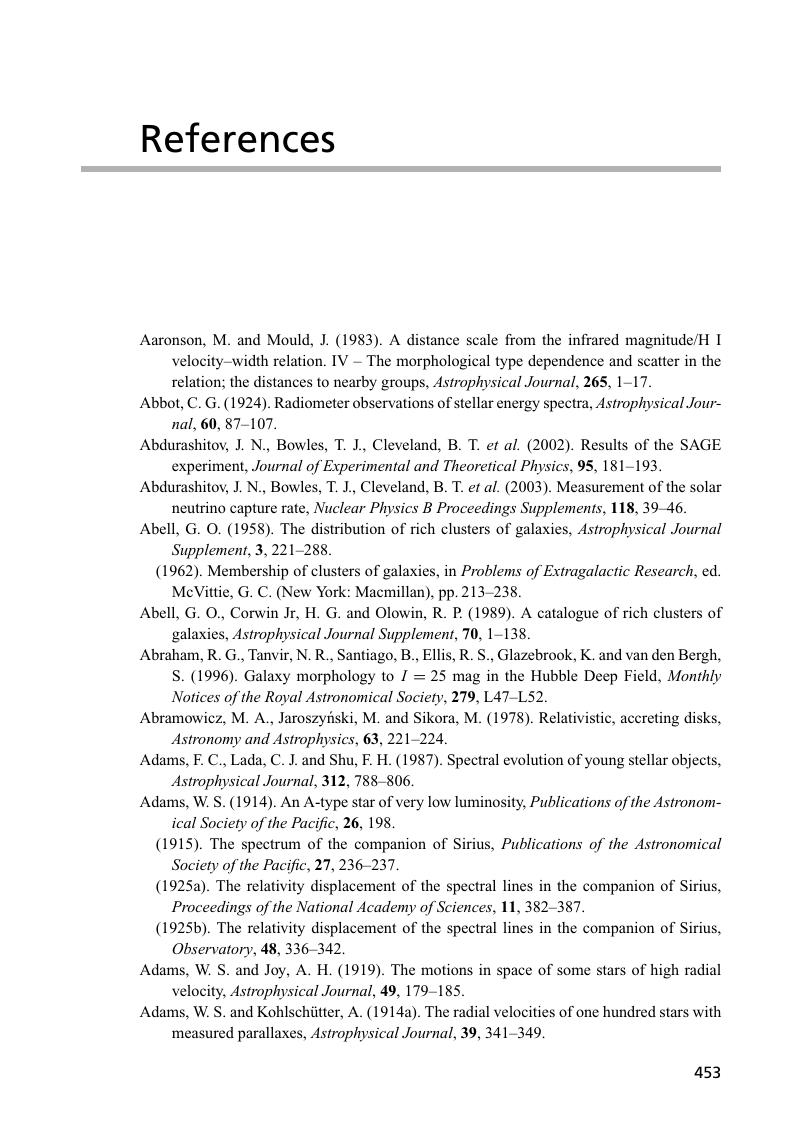Book contents
- Frontmatter
- Contents
- Preface
- Acknowledgements
- Part I Stars and stellar evolution up to the Second World War
- Part II The large-scale structure of the Universe, 1900–1939
- Part III The opening up of the electromagnetic spectrum
- Part IV The astrophysics of stars and galaxies since 1945
- Part V Astrophysical cosmology since 1945
- References
- Name index
- Object index
- Subject index
- References
References
Published online by Cambridge University Press: 05 February 2015
- Frontmatter
- Contents
- Preface
- Acknowledgements
- Part I Stars and stellar evolution up to the Second World War
- Part II The large-scale structure of the Universe, 1900–1939
- Part III The opening up of the electromagnetic spectrum
- Part IV The astrophysics of stars and galaxies since 1945
- Part V Astrophysical cosmology since 1945
- References
- Name index
- Object index
- Subject index
- References
Summary

- Type
- Chapter
- Information
- The Cosmic CenturyA History of Astrophysics and Cosmology, pp. 453 - 509Publisher: Cambridge University PressPrint publication year: 2006



